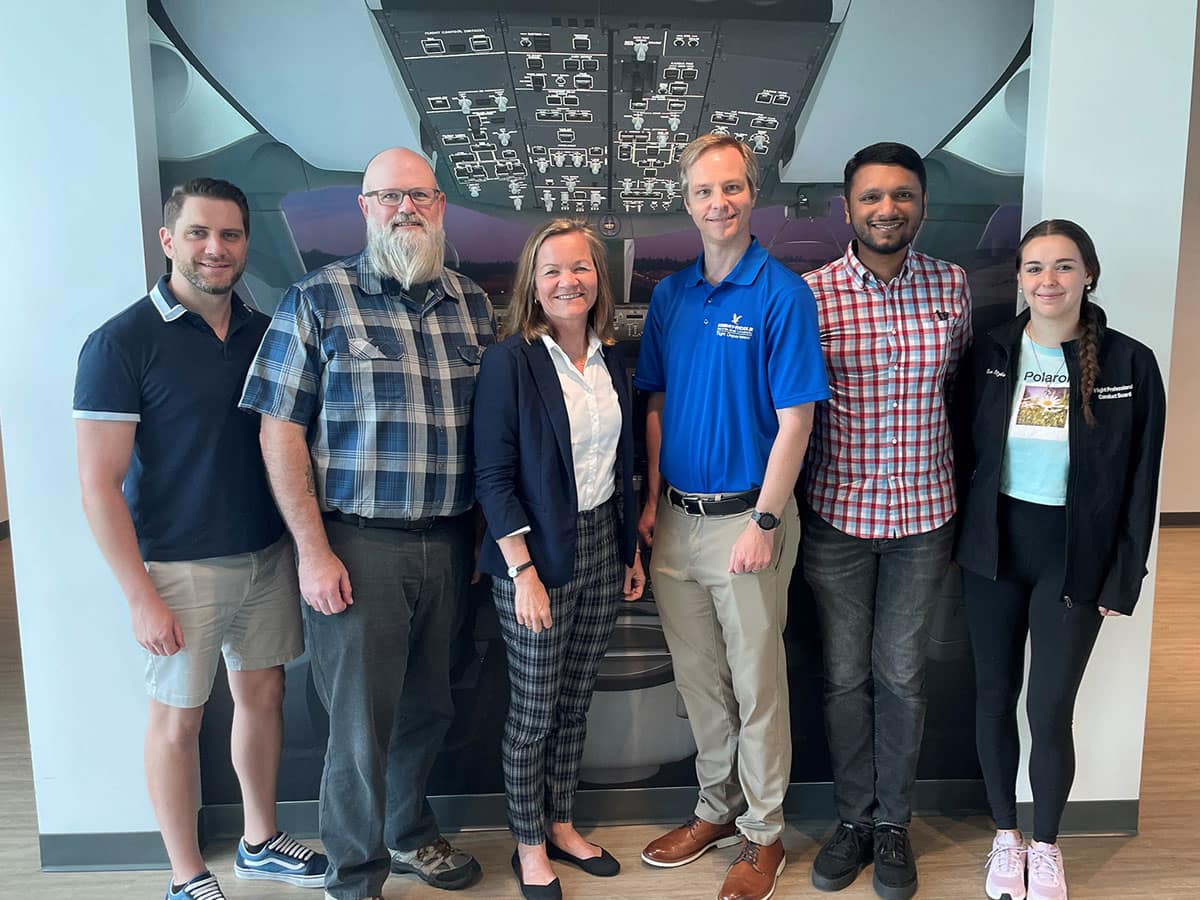Embry-Riddle Researchers Take a Positive Approach to Training Pilots

During her years training pilots as a U.S. Coast Guard flight instructor, Kristy Kiernan made it a point to not only correct trainees’ mistakes but to reinforce their positive actions.
This experience led Dr. Kiernan, associate director of the Boeing Center for Aviation and Aerospace Safety at Embry-Riddle Aeronautical University, to recognize a knowledge gap in studying pilot performance. While abundant flight data is collected on technical failures and human errors, there is scarce information on what flight crews do right.
Now, with the help of a $410,000 NASA grant, Kiernan and her team of graduate and undergraduate students are conducting research aimed at understanding, evaluating and reinforcing positive human performance on the flight deck in commercial aviation. The project, which began in 2023, received a prior grant from NASA, bringing its total funding to more than $700,000.
“Human behavior is a huge source of resilience, adaptability and flexibility,” said Kiernan, who is also an associate professor in the College of Aviation. “And if we are not able to study that positive performance in as systematic a way as we have studied error, then we are missing a huge opportunity.”
Finding the Missing Pieces
The project started after Kiernan discovered the work of Dr. Jon Holbrook and his colleagues at NASA. Holbrook’s team was exploring routine performance to understand the mechanisms behind human adaptability and resilience. Kiernan set out to discover how the industry was currently supporting resilient performance and how it could improve.
“While extensive research has been conducted on pilot errors and technical failures, there is comparatively less focus on the positive actions flight crews take to prevent accidents,” said Joel Samu, a College of Aviation Ph.D. student who is working with Kiernan on the project.
Samu, a pilot and certified flight instructor, said that focusing on resilience “reveals how adaptive behaviors actively maintain safety.”
Collecting data on what pilots are doing right on the flight deck can be challenging, Kiernan said. The first step for the research team — which includes Samu, Human Factors graduate students Joseph O’Brien and Lucas Epperson and senior undergraduate Aeronautical Science student Evelyn Itzkowitz — was to analyze the data gaps. They then needed to locate possible data sources.
“We found that overall, the industry is not gathering the right information to be able to evaluate and reinforce resilient performance,” Kiernan said, “but sifting through dozens of interviews, we were able to highlight steps the industry can take to learn from all operations —not just incidents and accidents.”
Reinforcing Resilient Behavior
The research team has dug deep into National Transportation Safety Board accident reports and flight crew interviews. Additionally, the team is analyzing NASA video and audio data derived from running different flight crews through scenarios with various operational challenges, such as runway changes, weather shifts and passenger issues.
“When we analyze that data, we are looking for measures of resilience,” said O’Brien. “For example, where did the pilot intervene to keep a situation from worsening and having an incident occur, or what’s going right on the flight deck to keep it a routine flight?”
Andrew Schneider, an assistant professor in the College of Aviation who specializes in researching Aviation English, will help the team conduct a linguistic analysis as part of the project’s second phase. This could include everything from the flight crew members’ language patterns to how the absence of communication affects performance.
“Often what pilots are thinking isn’t what they are saying,” said Schneider. “So, if we just look at traditional flight data recordings, we are going to only infer what pilots are thinking. But in these NASA scenarios, we can study what their perceptions were during the flight performance and then analyze the language. In the end, we are trying to understand the decision-making processes of pilots.”
The research could improve pilot training in several ways, Kiernan said.
“There are a lot of new tools available on commercial flight decks, like video replay of flights, so pilots can look at their own performance and reflect on it and learn from it,” she said. “There are also ways the organization can capture some of that data and formally reinforce it through improved training.”
In the end, the Embry-Riddle research team hopes to give pilots additional tools for safer and smoother flights.
“We want to empower the individual pilot to be able to reflect upon and improve their own performance by looking at what they are doing right and doing more of it,” Kiernan said.

 Melanie Stawicki Azam
Melanie Stawicki Azam